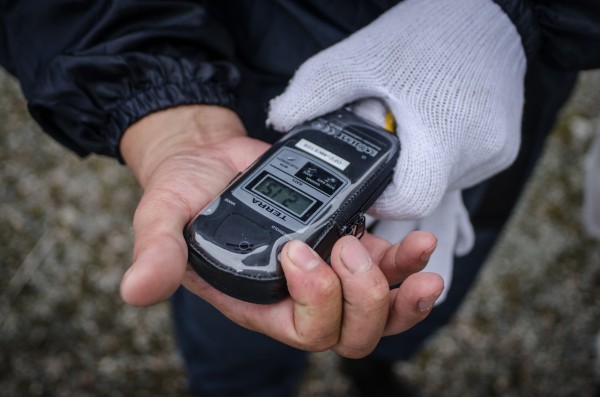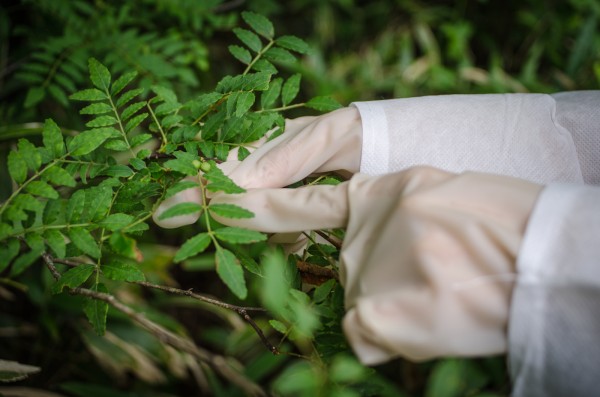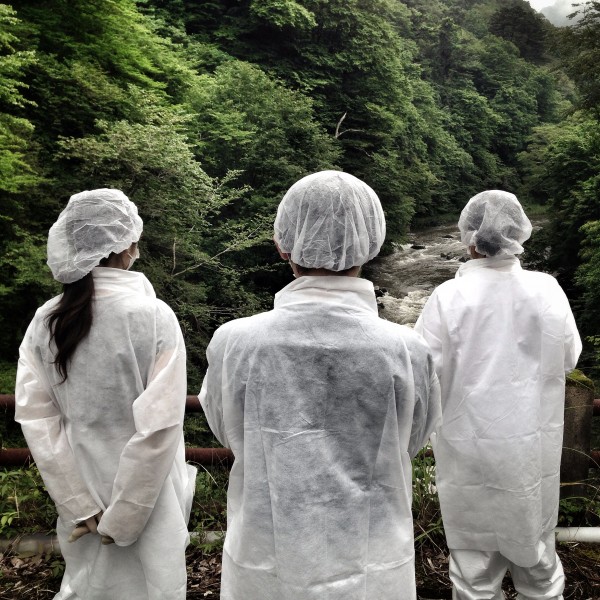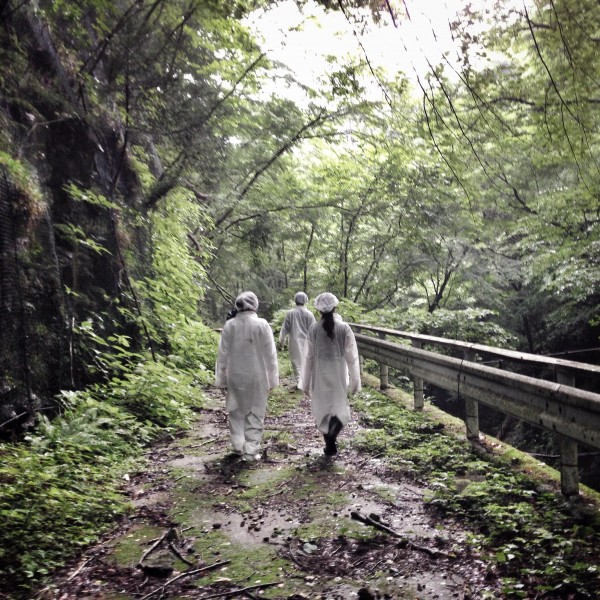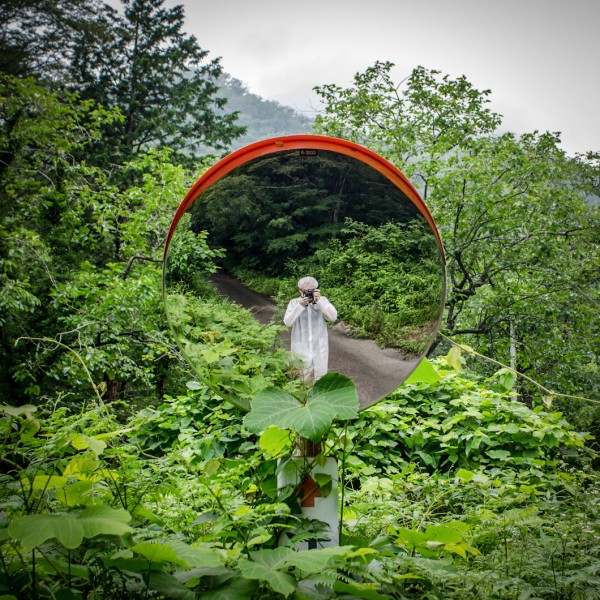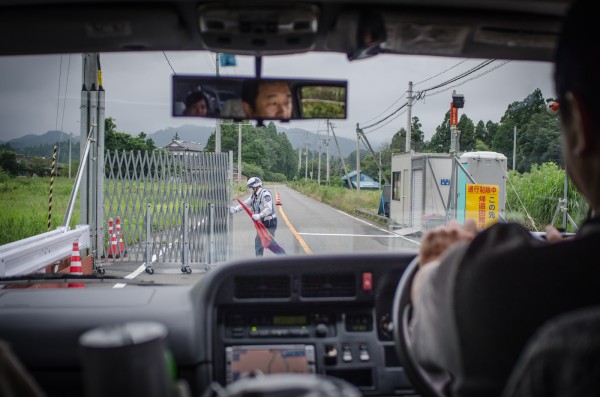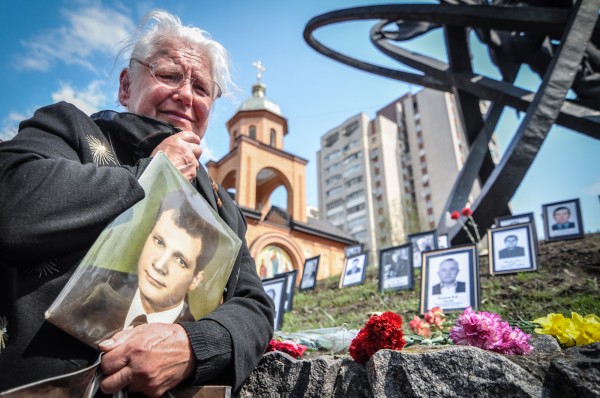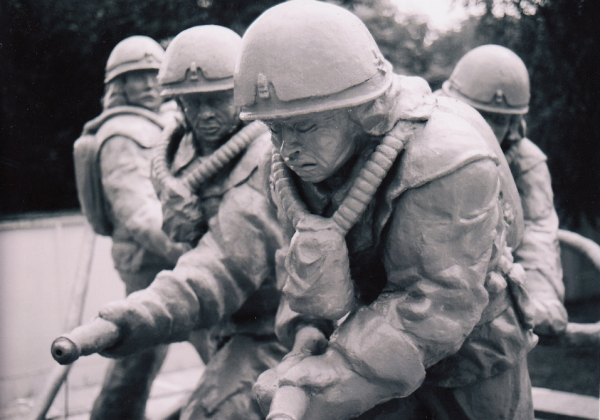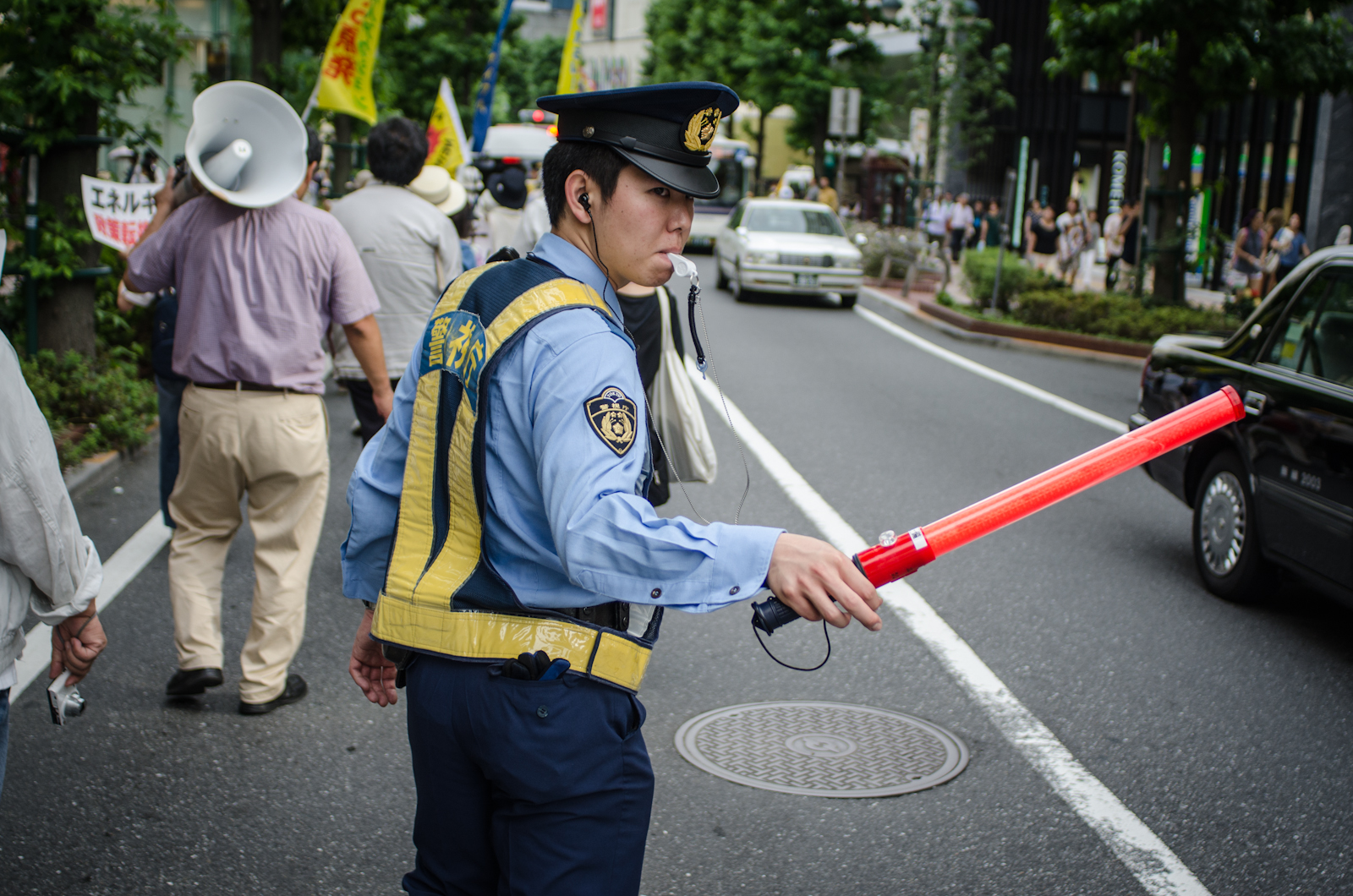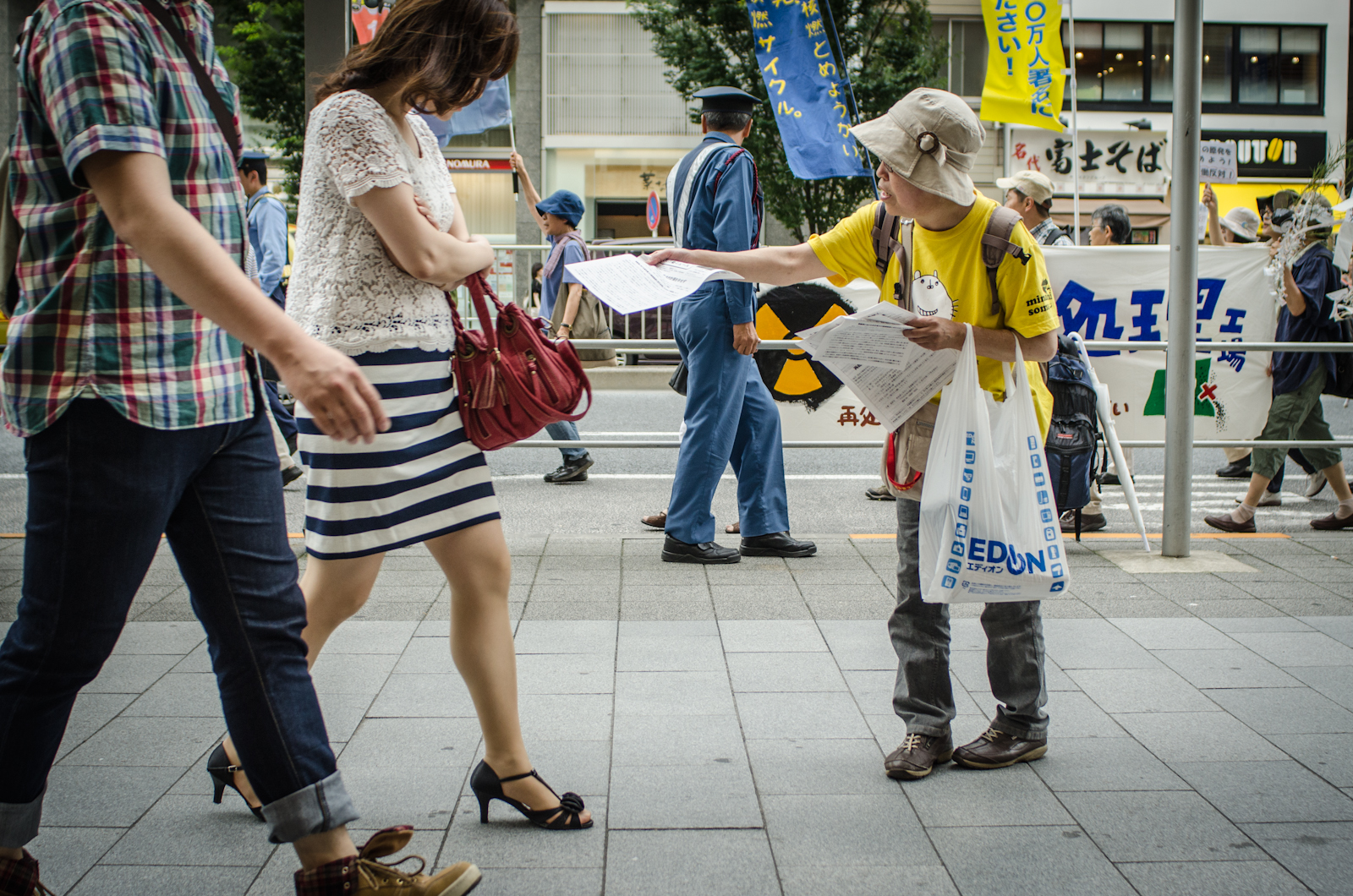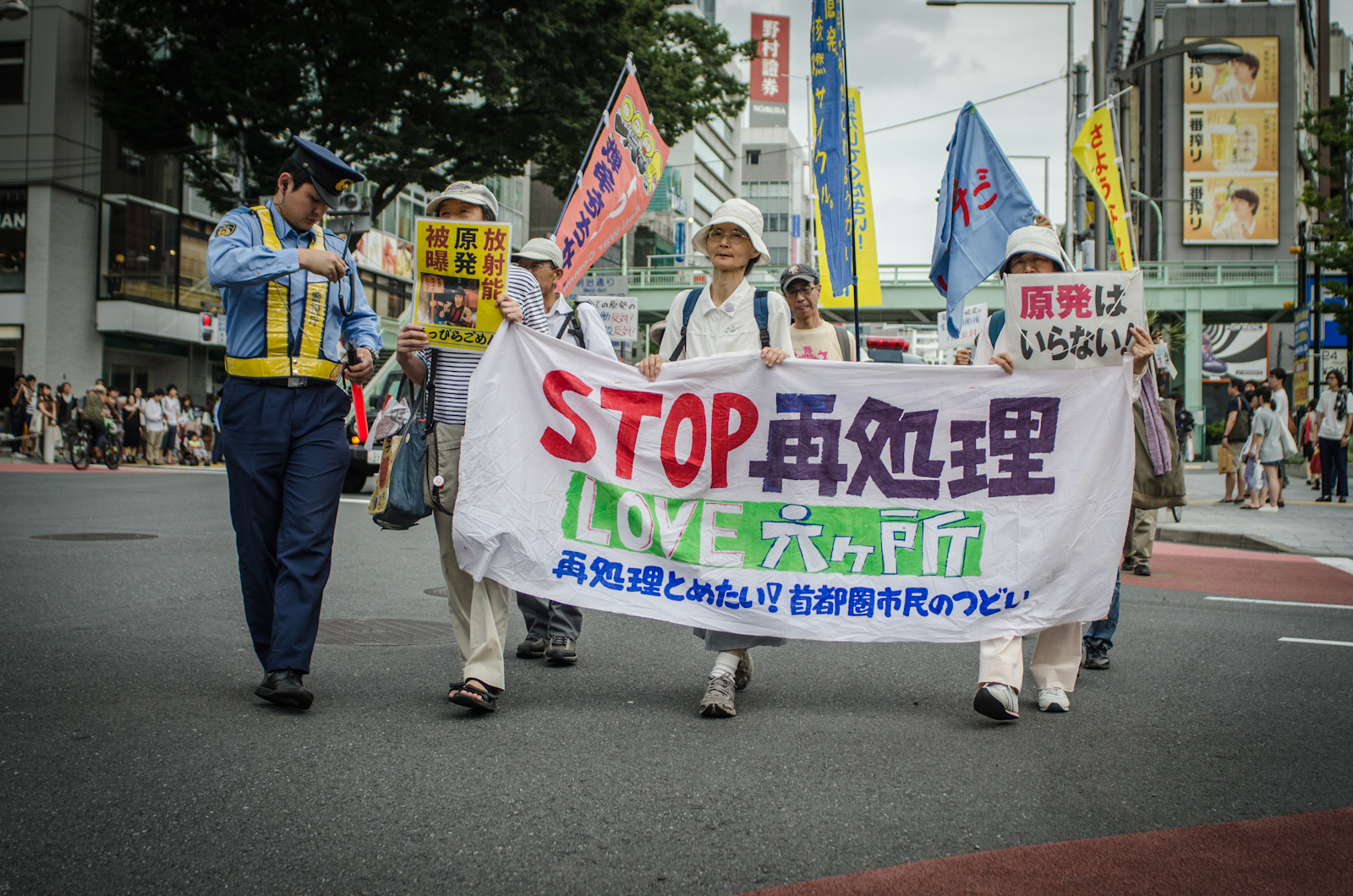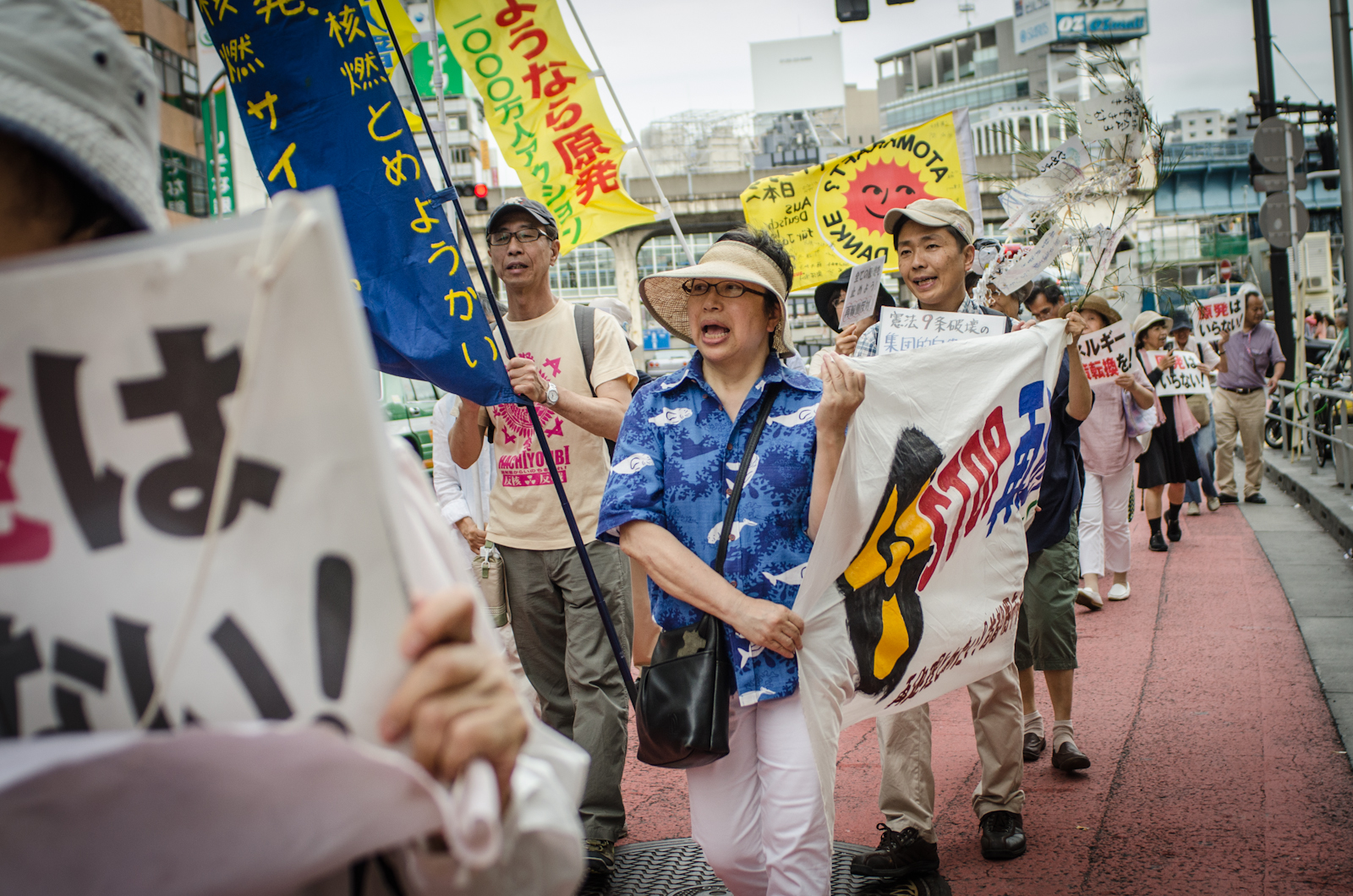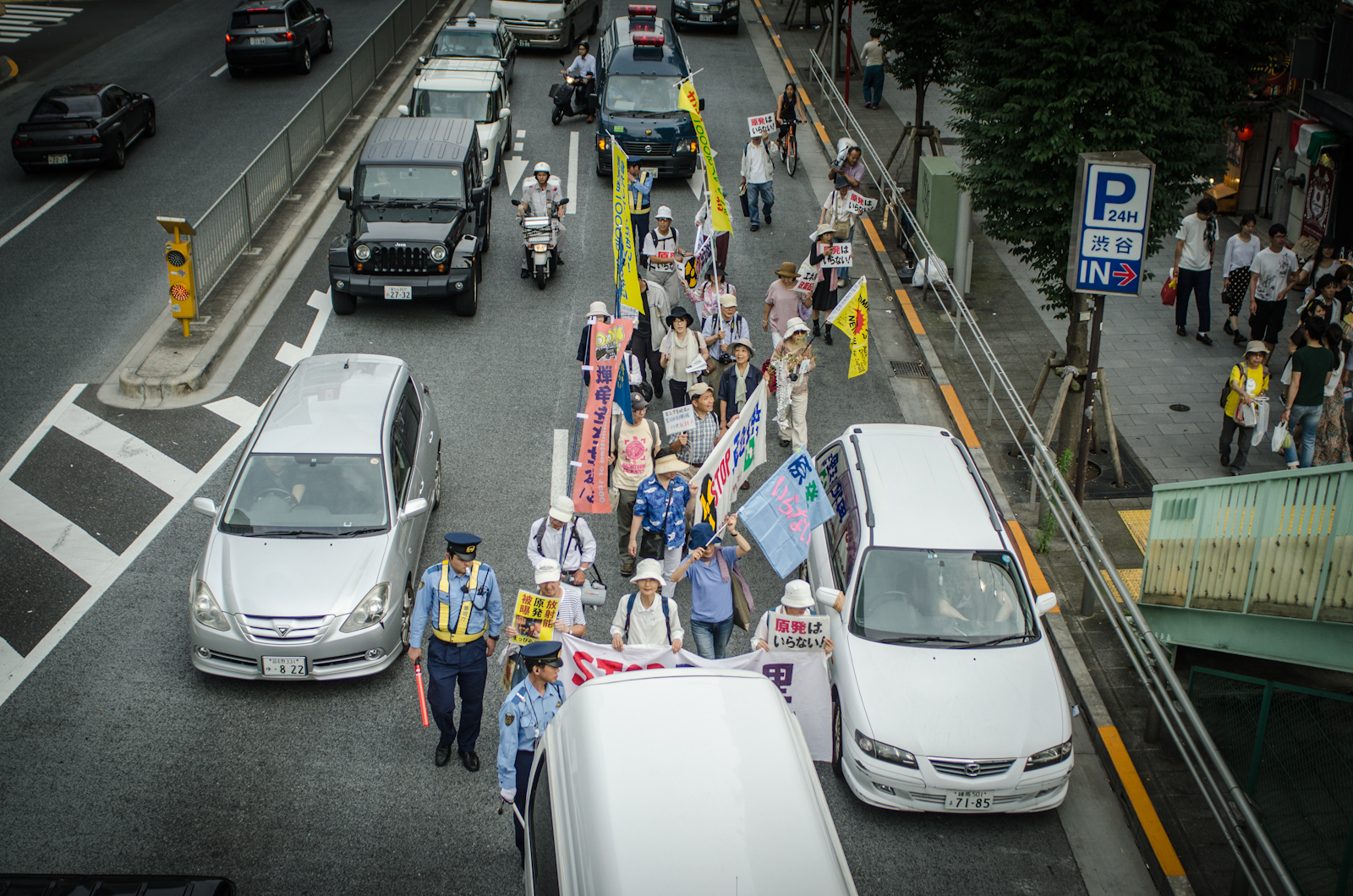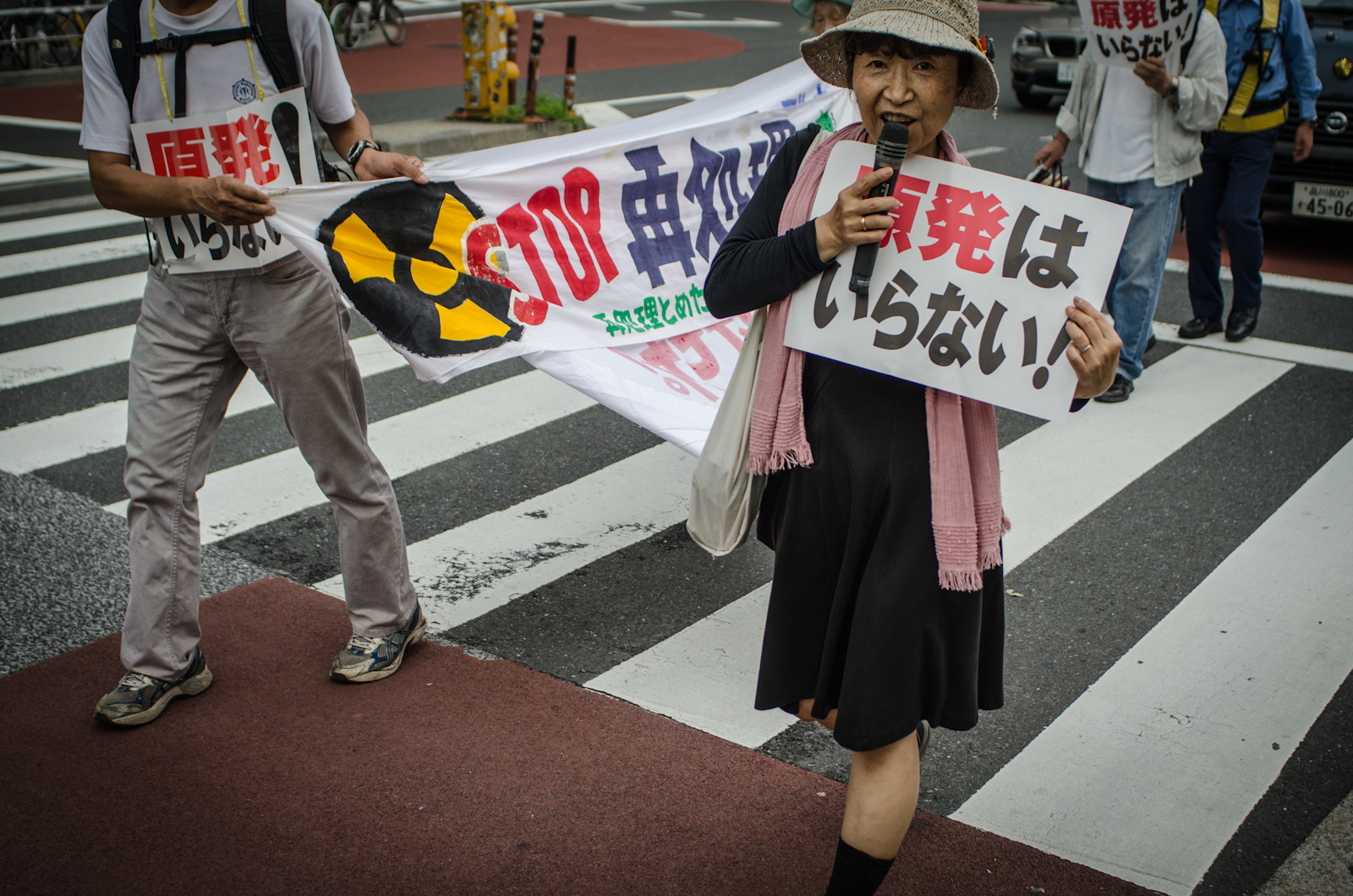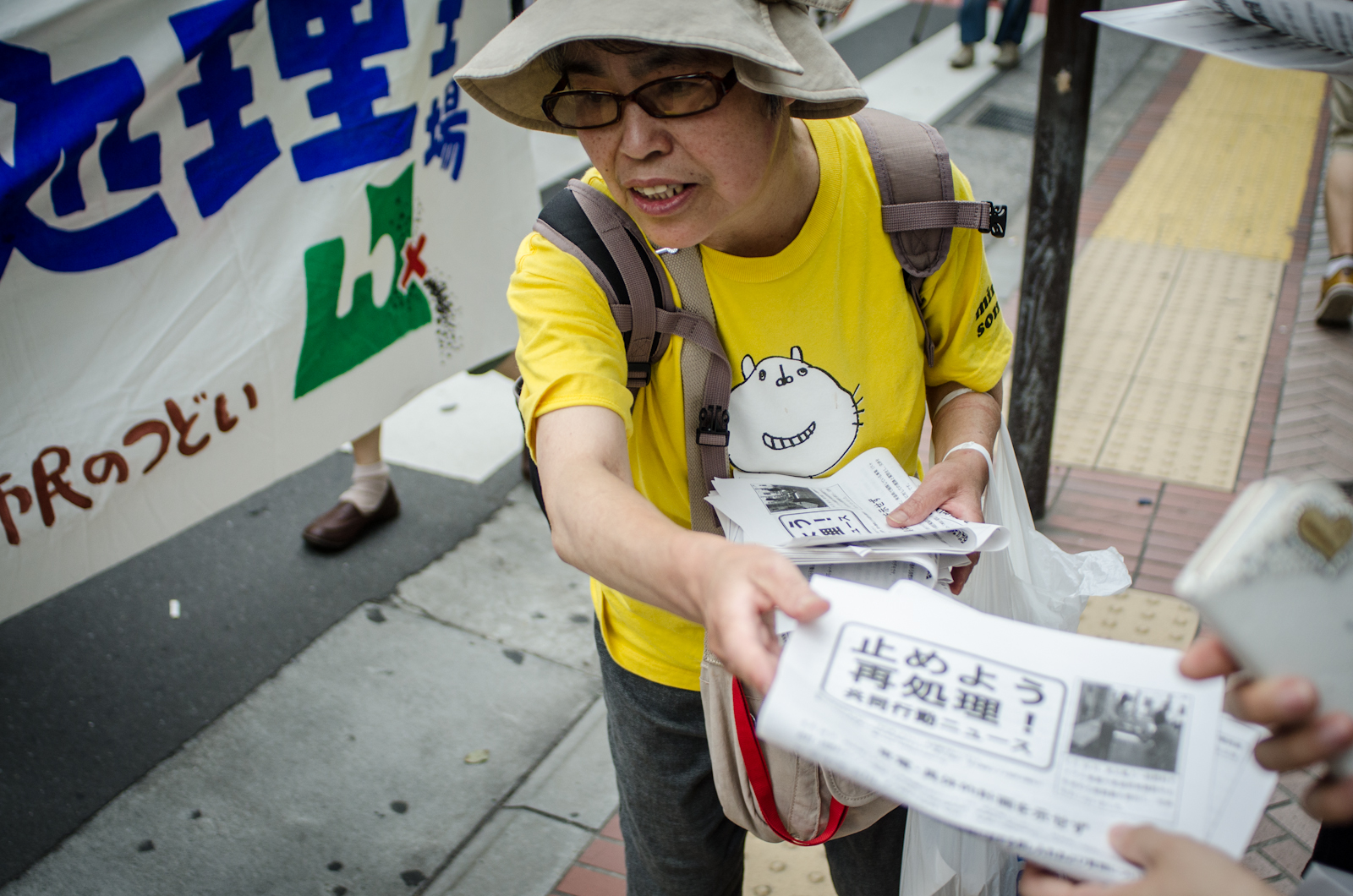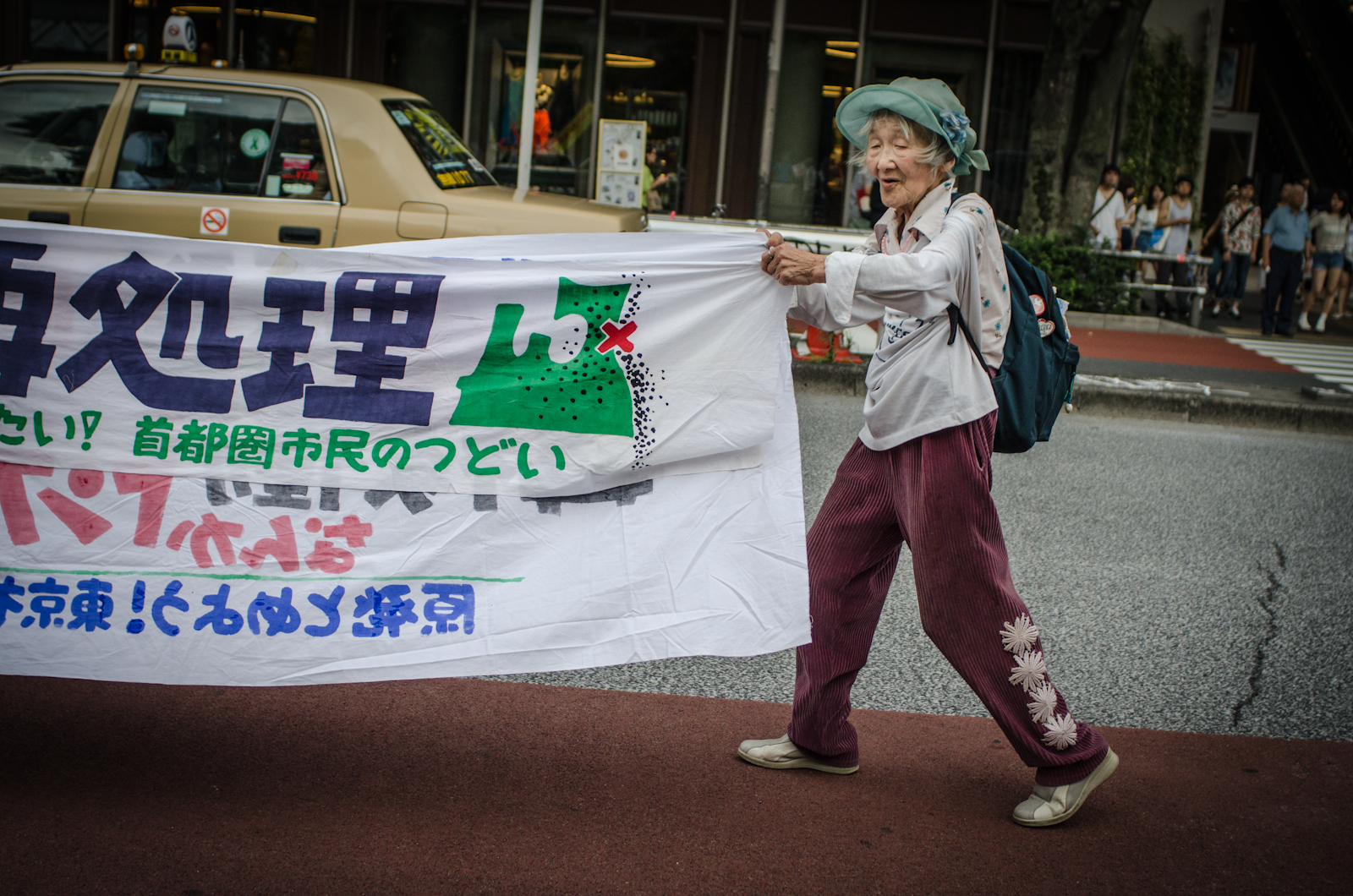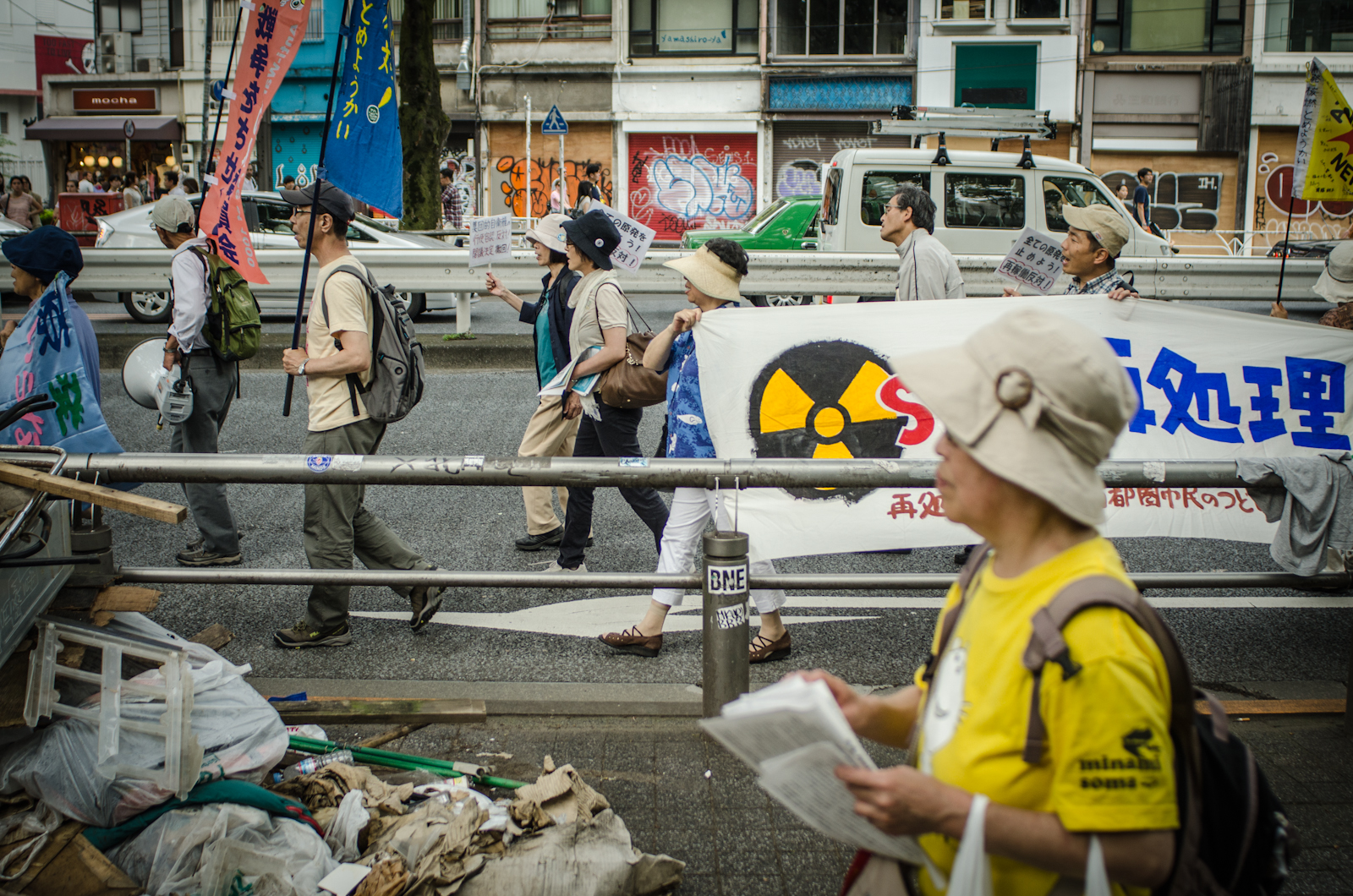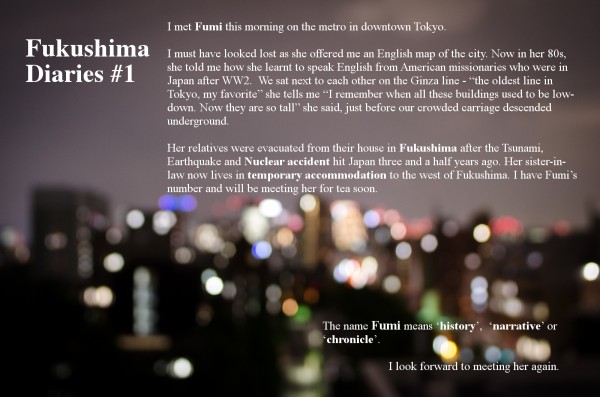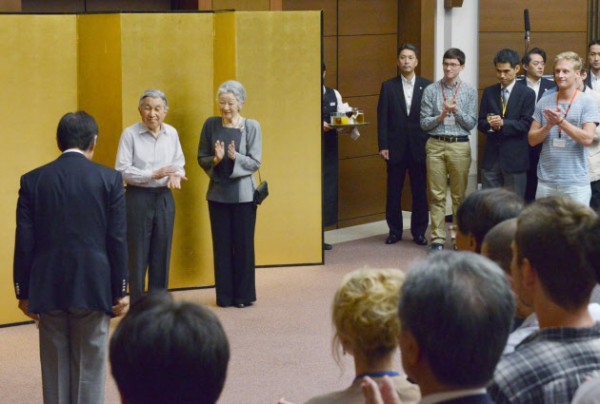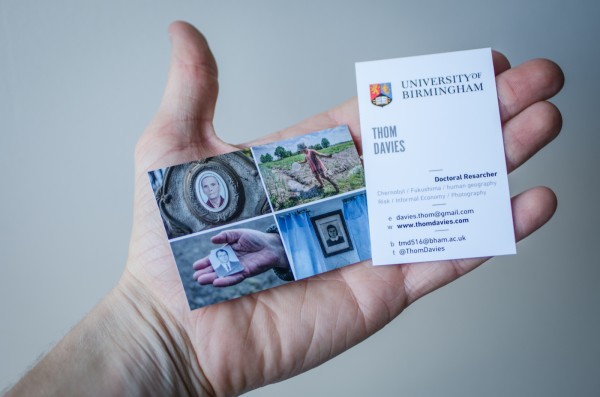Research diary outtake:
Hazmat suits and dosimeters, masks and rubber gloves we walked. Through the woodland near their house, abandoned but not forgotten in the Exclusion Zone. I am shown where they used to live, before everything changed.
I am walking with a husband and wife who were forced to leave their home after the nuclear disaster. Like tens of thousands of other evacuees, their lives have been utterly disrupted by what happened at the local atomic power station.
Now uncertainty has become the new normal; of not knowing when or if they may ever return. Uprooted and downsized they now live several hours away, their children forbidden from making this post-atomic journey back to their abandoned home, which they check upon from time to time.
“Wild boar smashed through this window” I am told, and I’m shown the shattered glass inside their house where pigs have run amok. I had seen one earlier as we were driving down an unkempt street near Namie town, before it darted into the bushes.
Along a road left overgrown with years of moss and fallen trees, we climb like spacemen up through the forest: across a river, under a branch, down-wind of the nuclear plant. Our sartorial façades of disposable white clothing turn us into nuclear symbols, alien life in this beautiful wasteland. The only visibly ‘nuclear’ thing out here is us.
I am shown a plant and its unripened berries, held in a latex glove; I make a photograph, transfixed by this strange vista.
The sound of the waterfall and the wind-blown leaves fail to conceal the threat of radiation. The nagging ‘click’ of the Geiger counters make sure of that. We hold onto our dosimeters like handrails in the dark, as they guide us arrogantly across this nuclear landscape. Along with our protective clothing, these devices were lent to us by the sad-faced employees of ‘Tokyo Electric Power Company’ when we entered the Zone.
That evening as we leave the Zone and our bodies are scanned for radiation, the same nuclear workers will bend double, bowing deep apologetic bows – the likes of which I have not yet seen in Japan.
hazmat
ˈhazmat/
noun
-
dangerous substances; hazardous material.
-
A hazmat suit (hazardous materials suit) is a piece of personal protective equipment that consists of an impermeable whole-body garment worn as protection against hazardous materials. Such suitsare often combined with self-contained breathing apparatus (SCBA) to ensure a supply of breathable air.
# dosimeter, Exclusion Zone, Fukushima, Geiger, Hazmat, human geography, Nuclear, radiation, TEPCO
1 1
Reflecting on gender and nuclear disaster:
Over the course of my research in Fukushima I’ve had the pleasure of meeting farmers who continue to illegally farm within the nuclear Exclusion Zone. A couple of them – jokingly – compared themselves to ‘Kamikaze’ (神風) making it clear that their own health could be damaged for the greater good. Likewise, a friend of mine who is a Japanese policeman described his work in the Exclusion Zone after 3/11 in stoical terms, playing down his personal risk of exposure, or the difficulties of searching for post-Tsunami corpses, or having to contend with the heat of the anti-radiation suits in the stifling Japanese Summer:
“I was just doing my duty”
This idea of sacrifice seems to attach itself to nuclear disaster. The ‘liquidators’ of Chernobyl for example are also framed in a similar way: male heroes idolised in monochrome photographs, or cast in stone – sacrificing themselves for the greater good. The ‘Fukushima 50’ too, have become motifs of nuclear disaster, encapsulating this idea of the strong masculine hero.
What these have in common is gender. But my research in Fukushima has found other gendered realities – such as the bravery of the self titled ‘Mothers of Fukushima’ who – with their husbands unable or unwilling to leave Fukushima – managed to resettle in Tokyo single handedly; successfully campaigning for their right to welfare assistance, while looking after young children, even while pregnant. A different kind of sacrifice, but a brave move nonetheless. One mother, who relocated her three children from Fukushima described how “my son stopped eating after we evacuated, but my daughters were fine” She said, and then continued “That’s when I knew women were stronger!”
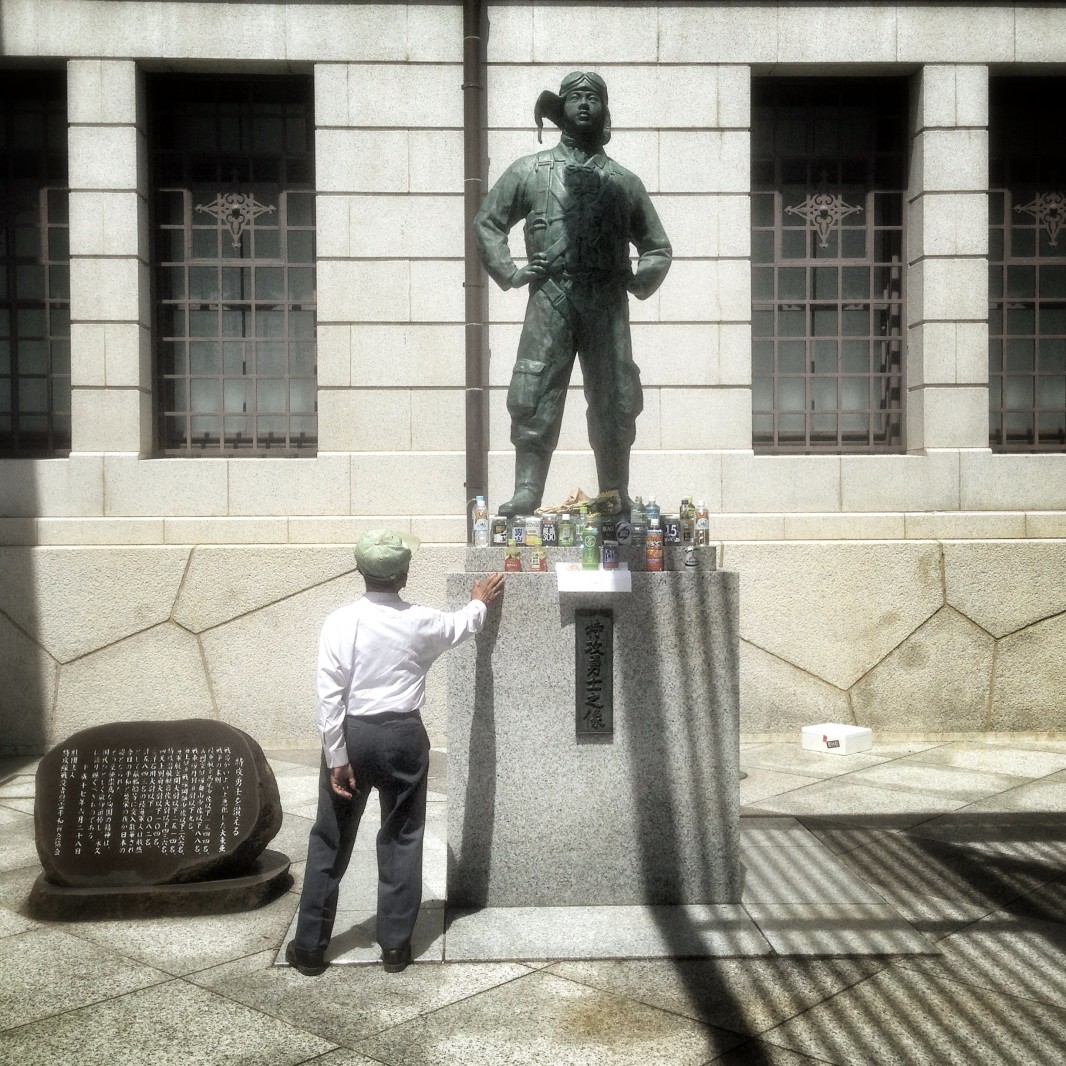
A Japanese War Veteran in front of a memorial to the 5000 Kamikaze pilots who sacrificed themselves during WW2
# Chernobyl, disaster, Fukushima, gender, kamikaze, nuclear accident, Thom Davies
0 3
Research diary outtake:
I went to an anti-nuclear protest in downtown Tokyo on Sunday. A few police were there to escort the protestors, occasionally stopping traffic and blowing their police whistles. It was an extremely controlled and polite affair. The police even told the protesters when and where to stop, which they promptly did.
It was a small protest by any standard, only twenty three people in total, the average age being somewhere in the mid-sixties. Holding anti-nuclear banners they chanted “No Nukes!” in English, and an elderly lady with a microphone made remonstrations about Fukushima through a megaphone.
I followed them as they slowly walked their way through the busy shopping district of Shibuya; moving at the pace of a funeral march – the police van ahead acting as their hearse. One protestor attempted to hand out flyers to the sea of shoppers who weaved past. Very often passers-by turned down the offer of a leaflet, politely bowing their head in rejection.
This small group of elderly protesters seemed so insignificant against the backdrop of Shibuya’s heaving intersection. The throng of faces waiting, texting, only occasionally glancing up – momentarily – at the comparatively unusual sight of a protest in Japan, before continuing on as they were.
In some ways it reminded me of a discussion I had last week at a ‘roundtable’ about Fukushima hosted by the the Foreign Correspondents Club of Japan. Several academics were there, as well as a Ukrainian diplomat and Japanese politician Tsuyoshi Shiina from the opposition ‘Unity Party‘ (結いの党).
The general consensus from the invited speakers was that the Fukushima accident has had relatively little impact on Japan’s political landscape. Much like how this small group of protesters was having little impact on the opinions of the thousands of uninterested onlookers.
What I took away from the roundtable about the political impact of Fukushima was both interesting and surprising. You can watch the whole discussion the video below.
At the time of writing we are almost three and a half years after the Fukushima nuclear disaster. A similar period of time after Chernobyl occurred in the ‘Ukraine Soviet Socialist Republic’ [Украинская Советская Социалистическая Республика] – the Soviet Union collapsed. Some academics such as Phillip Stone, Marjolein van der Veen, as well as myself, have attributed Chernobyl as a key factor leading to the sudden and unexpected implosion of the Soviet Empire. Chernobyl was, as one journalist reminded me at the Fukushima roundtable, the real start of Glasnost, of freedom of information. It showed for the first time the complete failure of the Soviet Union to protect its citizens.
In Japan there are no signs of such change. Given the far-reaching consequences of Chernobyl – might we expect more? In Japan there is no real questioning of the status-quo, at least at the national level, at least at the level of mainstream politics. The current government in fact, has never been stronger, with Prime Minster Shinzō Abe (安倍晋三) even able to pass a controversial law ending Japan’s constitutionally implied post-war pacifism.
Nuclear energy has not even become a totem around which opposition movements can pin their colours, as happened with Polish independence movements after Chernobyl. Instead we have the opposite – an entrenchment of political voices that means Japan’s energy landscape, which saw a reduction of nuclear power by 95% since 2010, will only be a brief hiatus in the onward march towards nuclear energy. The Fukushima-Daiichi accident is, then a mere bump in the road. In Japan the ‘nuclear village’ – as guest speaker Dr Christopher Hobson frames it – is as strong as ever, with the incumbent and opposition parties in Japan unable to offer any real alternative to nuclear power.
***
I guess one expects things that one looks at intensely to hold a stronger significance. We are perhaps all guilty of attributing greater significance to things we signify as important. Perhaps Chernobyl did not have that large an impact on the political landscape of the USSR, if Fukushima is anything to go by. Or perhaps the official political impact of disasters is the wrong measure, and skirts around the real impacts felt by the damaged and abandoned communities who always seem to preface nuclear disaster. Perhaps the undeniable social fallout – is where Chernobyl and Fukushima become uneasy bedfellows for comparison.
Chernobyl may not be the right lens through which to view all nuclear disasters, but its magnitude has fated each future meltdown to be compared – cheek by jowl. There is some truth in the cliché that ‘If you’re holding a hammer then everything starts to look like a nail‘. My hammer is four years of doctoral research about Chernobyl, so no surprise, then, that in my mind at least, Fukushima is the Chernobyl of the East. I’m hardly the first and won’t be the last to compare one with the other. It’s how we understand anything, through comparison, through metaphor.
The dissonance between the small group of elderly protestors marching slowly through Shibuya and the mass of passive onlookers glancing up with indifference reminded me of the political situation in Japan. It spoke to the disconnect between a disaster’s huge social impact, and its apparent limited impact on the political landscape.
***
Read more on Hobson’s research on the post-3/11 politics and nuclear power in his recent paper here.
Research diary outtake:
I met Fumi this morning on the metro in downtown Tokyo. I must have looked lost as she offered me an English map of the city. Now in her 80s, she told me how she learnt to speak English from American missionaries who were in Japan after WW2. We sat next to each other on the Ginza line – “the oldest line in Tokyo, my favorite” she tells me “I remember when all these buildings used to be low-down. Now they are so tall” she said, just before our crowded carriage descended underground.
Her relatives were evacuated from their house in Fukushima after the Tsunami, Earthquake and Nuclear accident hit Japan three and a half years ago. Her sister-in-law now lives in temporary accommodation to the west of Fukushima. I have Fumi’s number and will hopefully be meeting her for tea soon.
The name Fumi means ‘history’, ‘narrative’ or ‘chronicle’. I look forward to meeting her again.
# Fukushima, Fumi, Ginza Line, human geography, interview, JSPS, metro, snowballing, Tokyo
0 2
Combined with the heady mix of jet lag and a few glasses of white wine, meeting the Emperor of Japan was one of the more surreal moments of my life. I felt even more out of place as I was in a T-shirt and shorts – though the shorts have been skilfully cropped out by the photographer (below)
I met the Emperor Akihito – known as the ‘heavenly sovereign’ (天皇) of Japan – at a wine reception near Tokyo on the first day of my JSPS funded fellowship. I’ve been awarded the scholarship to research the ongoing impacts of the 2011 Fukushima nuclear disaster in comparison with my existing ethnographic study in Chernobyl, Ukraine. Hosted by the University of Tokyo, I will be conducting fieldwork with communities affected by the disaster.
I spoke with the head of the Japanese Imperial family, and his wife Empress Michiko, explaining my research and talking briefly about my experience of Chernobyl. The Emperor wished me every success in Japan.
What the Emperor was like:
He’s s a small man, in stature and height – fragile with age but pretty active for an octogenarian. When I met him he was purposely shuffling with an entourage and smile. He asked me some questions and spoke through a translator at times, though I would guess this has more to do with slight deafness than not being fluent in English. We were told to speak loudly and slowly when addressing ‘His Imperial Majesty’.
We were later told that he was also accompanied by a 250 strong security team, but they made their presence fairly subtle – though frankly, a group of researchers probably posed quite a low risk threshold.
We were not supposed to take any photographs, which is a shame. I would have loved an ‘Imperial Selfie’.
# Chernobyl, Emperor Akihito, Emperor of Japan, Fukushima, JSPS, JSPS Summer Program
0 4
I am getting ready to travel to Japan this summer to research the ongoing impacts of the Fukushima nuclear accident. I have been awarded a JSPS Fellowship to do Chernobyl-Fukushima comparative research, based at the University of Tokyo.
I am really looking forward to seeing how the two disasters compare. For the last few years I have spent long periods in Ukraine interviewing and researching people affected by Chernobyl for a PhD in Human Geography. Having seen how marginalized communities cope with nuclear disaster in Ukraine, it will be interesting to see if similar opinions, views and struggles are playing out near Fukushima.
Business Cards
When I mention to people that I am going to Japan, one of the first pieces of advice people give is to make sure I have business cards. I’m told there is a tradition that surrounds business cards in Japan; certain ways of receiving and presenting cards. So I had some made. They arrived today, and I am hoping they will help me make connections when I am in Japan studying the Fukushima disaster.
I put four photographs from my War without War: Chernobyl photography project on the back.
I was near Chernobyl when Fukushima happened
March 2011: in a village near the main entrance to the Chernobyl ‘Exclusion Zone’ we had pulled-over to listen to the radio. I kept hearing the word “Yaponiya” (Japan) and “atomny” (atomic) from the crackly car stereo. The newsreader then started talking about Chernobyl: “Reports suggest that the nuclear meltdown in Japan could be like another Chernobyl…” I could not believe what I was hearing. Was this really happening? I got out of the car.
I had spent the previous week interviewing people who live in the contaminated landscape around the Chernobyl. My head (and voice-recorder) was full of their stories about life after Chernobyl, their daily struggles of life on the edge. My was body full of delicious Ukrainian food I had been given by kind old women and friendly villagers.
Standing by the car, in a village near Chernobyl – the radio crackling in the background – I had a very small sense of the confusion and unease that many people felt after disaster. What was the future for Japan? I thought. What was happening? Looking across a field past a few abandoned wooden houses, I could see the contaminated ‘Exclusion Zone’ beyond. Was this the future?
